- europages
- >
- COMPANIES - SUPPLIERS - SERVICE PROVIDERS
- >
- organic cacao
Results for
Organic cacao - Import export
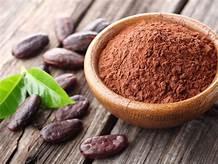
NUTRA INGREDIENTS LTD
United Kingdom
Product 4 description and specification ...
Request for a quote
VEHGRO B.V
Germany
"What are Cacao nibs? Cacao nibs come from the cacao bean. The fruit grows directly on the stem. Cacao beans are grown in countries around the equator. Cocoa is used to make chocolate. Cacao nibs cannot be compared with chocolate. Cacao nibs are slightly drier in taste and actually they are a kind of small pieces of raw and pure cacao. Are Cacao nibs healthy? Cacao nibs are certainly healthy because they are not processed. Cacao nibs are rich in antioxidants that contribute to healthy heart and blood vessels. Because of the high content of protein, fat, carbohydrates, fibre, iron, calcium, magnesium, B vitamins and vitamin C and E, this product can rightly be called a superfood. Raw, organic cacao nibs are free of added pesticides, sugar and fat. Raw cacao contains minerals and trace elements including copper, zinc, manganese, magnesium and chromium. How to use cacao nibs? The raw cacao nibs are easy to process in smoothies, coffee, desserts, yo…"
Request for a quote
MAYA GOLD TRADING
Netherlands
Organic Raw cacao powder is obtained by cold-pressing roasted cocoa beans and then grinding these into a fine powder. This process removes nearly all the fat from the cocoa bean, leaving a strong, rich and bitter flavour. Cacao is a great source of antioxidants such as procyanidins and flavonoids
Request for a quote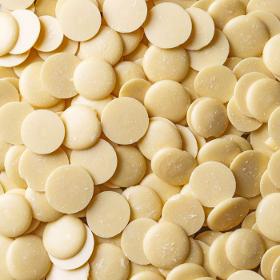
MAYA GOLD TRADING
Netherlands
We offer organic cacao butter wafers and organic deodourised cacao butter to suit all your needs. You can find more information about our organic organic cacao butter below
Request for a quote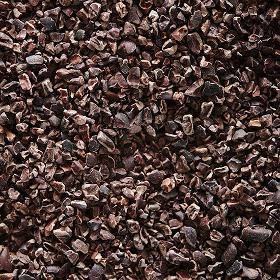
MAYA GOLD TRADING
Netherlands
You’ll generally see cacao nibs incorporated into other chocolate products, or simply covered in chocolate and sold as a snack. They are also sold separately, intended to be used as a mix-in for baked goods, bars, cereals or sweets. Like most cacao products, cacao nibs have numerous health benefits. They are high in fiber, protein, healthy fats and iron but also low in sugar
Request for a quoteDo you sell or make similar products?
Sign up to europages and have your products listed
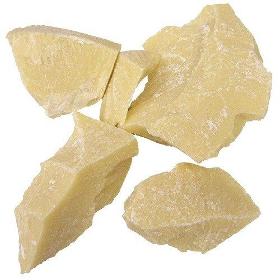
VEHGRO B.V
Germany
"History and Origins Cacao (Theobroma) was first harvested by the Olmecs in Mexico as early as 1000 B.C. At that time it was mainly used for fortifying drinks. Over the years, the Mayas and the Aztecs adopted this use in their cultures. Cocoa became part of ceremonial rituals and cocoa beans were a means of payment. In the 16th century, the Spanish brought cocoa to Europe. In the mid-17th century, it became a popular drink. Cocoa trees were introduced to Asia and West Africa through colonies of various European countries, as there was a rising demand for chocolate in Europe. The cocoa bean is the raw material used in the production of chocolate. These cocoa beans originate from the tropical climates of South America (Ecuador). The Theobroma cacao tree is sacred to the Mayans and Aztecs. The cacao beans from the tree are harvested by hand and the raw beans are then cleaned in natural water and selected for the best quality. This process ensures that the nutritio…"
Request for a quote
VEHGRO B.V
Germany
"History and Origins Cacao (Theobroma) was first harvested by the Olmecs in Mexico as early as 1000 B.C. At that time it was mainly used for fortifying drinks. Over the years, the Mayas and the Aztecs adopted this use in their cultures. Cocoa became part of ceremonial rituals and cocoa beans were a means of payment. In the 16th century, the Spanish brought cocoa to Europe. In the mid-17th century, it became a popular drink. Cocoa trees were introduced to Asia and West Africa through colonies of various European countries, as there was a rising demand for chocolate in Europe. The cocoa bean is the raw material used in the production of chocolate. These cocoa beans originate from the tropical climates of South America (Ecuador). The Theobroma cacao tree is sacred to the Mayans and Aztecs. The cacao beans from the tree are harvested by hand and the raw beans are then cleaned in natural water and selected for the best quality. This process ensures that the nutritio…"
Request for a quote
VEHGRO B.V
Germany
"History and Origins Cacao (Theobroma) was first harvested by the Olmecs in Mexico as early as 1000 B.C. At that time it was mainly used for fortifying drinks. Over the years, the Mayas and the Aztecs adopted this use in their cultures. Cocoa became part of ceremonial rituals and cocoa beans were a means of payment. In the 16th century, the Spanish brought cocoa to Europe. In the mid-17th century, it became a popular drink. Cocoa trees were introduced to Asia and West Africa through colonies of various European countries, as there was a rising demand for chocolate in Europe. The cocoa bean is the raw material used in the production of chocolate. These cocoa beans originate from the tropical climates of South America (Ecuador). The Theobroma cacao tree is sacred to the Mayans and Aztecs. The cacao beans from the tree are harvested by hand and the raw beans are then cleaned in natural water and selected for the best quality. This process ensures that the nutritio…"
Request for a quote
VEHGRO B.V
Germany
"History and Origins Cacao (Theobroma) was first harvested by the Olmecs in Mexico as early as 1000 B.C. At that time it was mainly used for fortifying drinks. Over the years, the Mayas and the Aztecs adopted this use in their cultures. Cocoa became part of ceremonial rituals and cocoa beans were a means of payment. In the 16th century, the Spanish brought cocoa to Europe. In the mid-17th century, it became a popular drink. Cocoa trees were introduced to Asia and West Africa through colonies of various European countries, as there was a rising demand for chocolate in Europe. The cocoa bean is the raw material used in the production of chocolate. These cocoa beans originate from the tropical climates of South America (Ecuador). The Theobroma cacao tree is sacred to the Mayans and Aztecs. The cacao beans from the tree are harvested by hand and the raw beans are then cleaned in natural water and selected for the best quality. This process ensures that the nutritio…"
Request for a quote
VEHGRO B.V
Germany
"Alkalized Cocoa Powder Organic The cocoa trees from which cocoa powder is made are native to South America. Cacao trees (Theobroma) produce pods of 15 to 25 cm long. Each pod contains 20 to 40 beans in a kind of paste. The raw beans are about 2.5 cm long. After harvesting, the pods are opened and emptied. The removed paste is then left to ferment in the sun for a few days. After drying, the beans are broken into small pieces and passed through a grinder to separate the beans from their husks. The cacao pieces are then ground with a stone for 10 hours to a fine paste. The paste is sieved to separate the remaining pieces from the butter. The remaining pieces are further ground into cocoa powder. Alkalized Cocoa Dutch (alkaline) cocoa is different from cocoa in other countries, which is why alkaline cocoa is also called Dutched cocoa in the U.S. The natural cocoa is washed with a potassium carbonate solution, which neutralises the acid in the cocoa. Because of …"
Request for a quote
COCOA HUB
United Kingdom
Region and Country The Kilombero Valley, Morogoro Region, Tanzania Kilombero is bordered on one side by the Udzungwa mountains, part of which is protected by a national park. Story The founders of Kokoa Kamili were professionals in international development who were frustrated with the top-down approach of many organisations. They decided that the most direct form of benefit for the communities they work with would be to pay high prices for their produce. The farmers would then be able to decide for themselves how to best use this extra income. Farmers receive on average about 25% more pay for their cacao from Kokoa Kamili. Additionally, Kokoa Kamili distributes seedlings to farmers as donations or for a low cost and provides farmer training to help increase both the yields and the quality of the cacao they grow
Request for a quote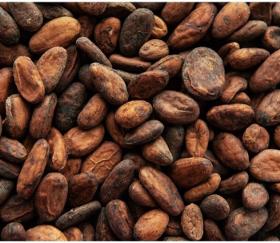
COCOA HUB
United Kingdom
Region and Country Tumaco, Nariño Department, Colombia Story Once known for its Criollo cacao varieties, Colombia gradually replaced these with modern hybrids to foster productivity and hardiness while maintaining interesting flavours. Nowadays, Colombia is actively seeking to bring cacao to the same legendary levels as its coffee. Organized cacao producer groups and the government have been supporting efforts to plot genetic varieties in the country, to improve genetic stocks and their post harvesting processes. Tumaco, a region in the South Pacific of Colombia, has been one of the most affected areas by the presence of paramilitary groups and coca cultivation in the country. Cocoa offers the local population a means to improve their livelihoods through a fair and sustainable income. Through cocoa, the people seek a future free of violence and other problems related to the cultivation of illicit crops.
Request for a quoteResults for
Organic cacao - Import exportNumber of results
13 ProductsCountries
Company type